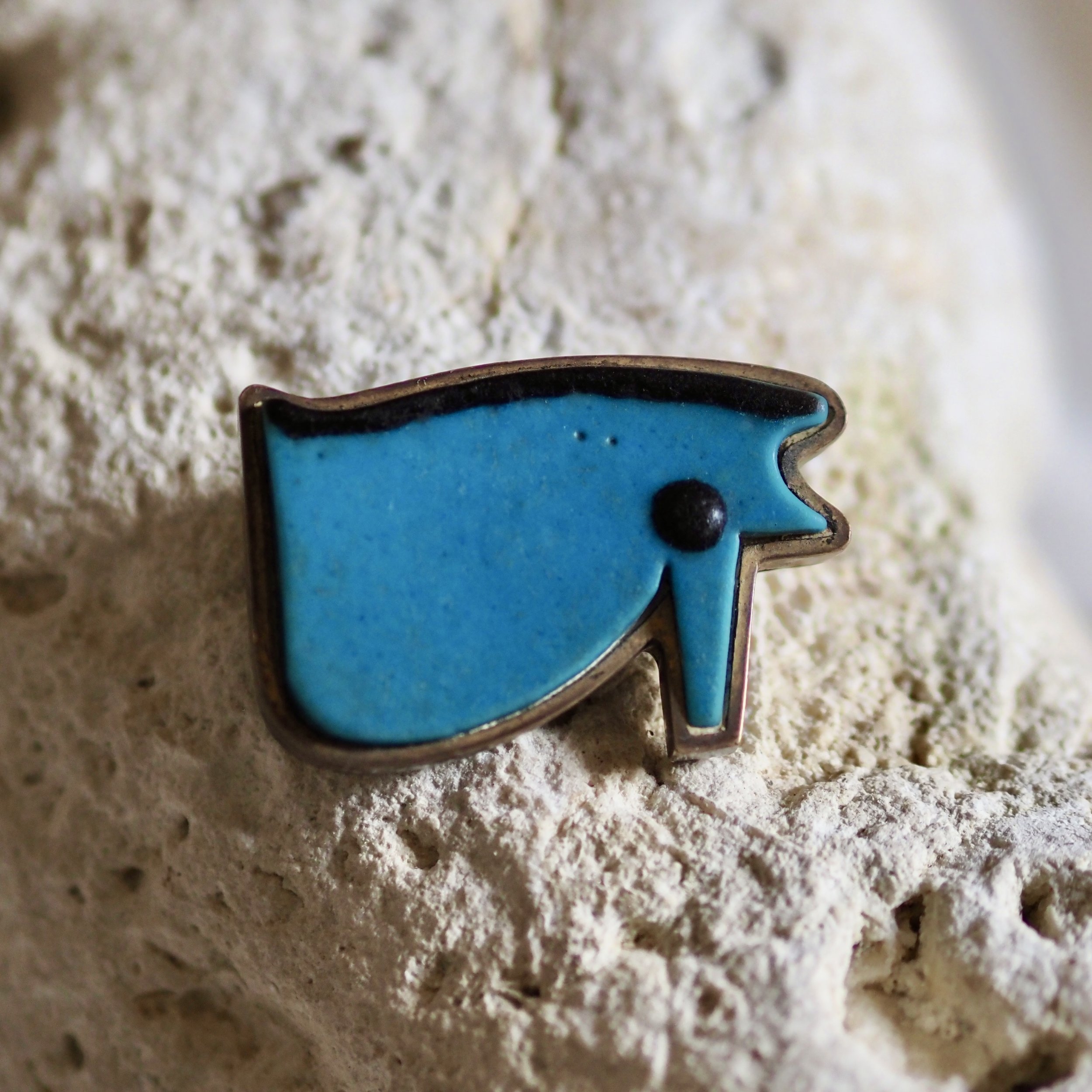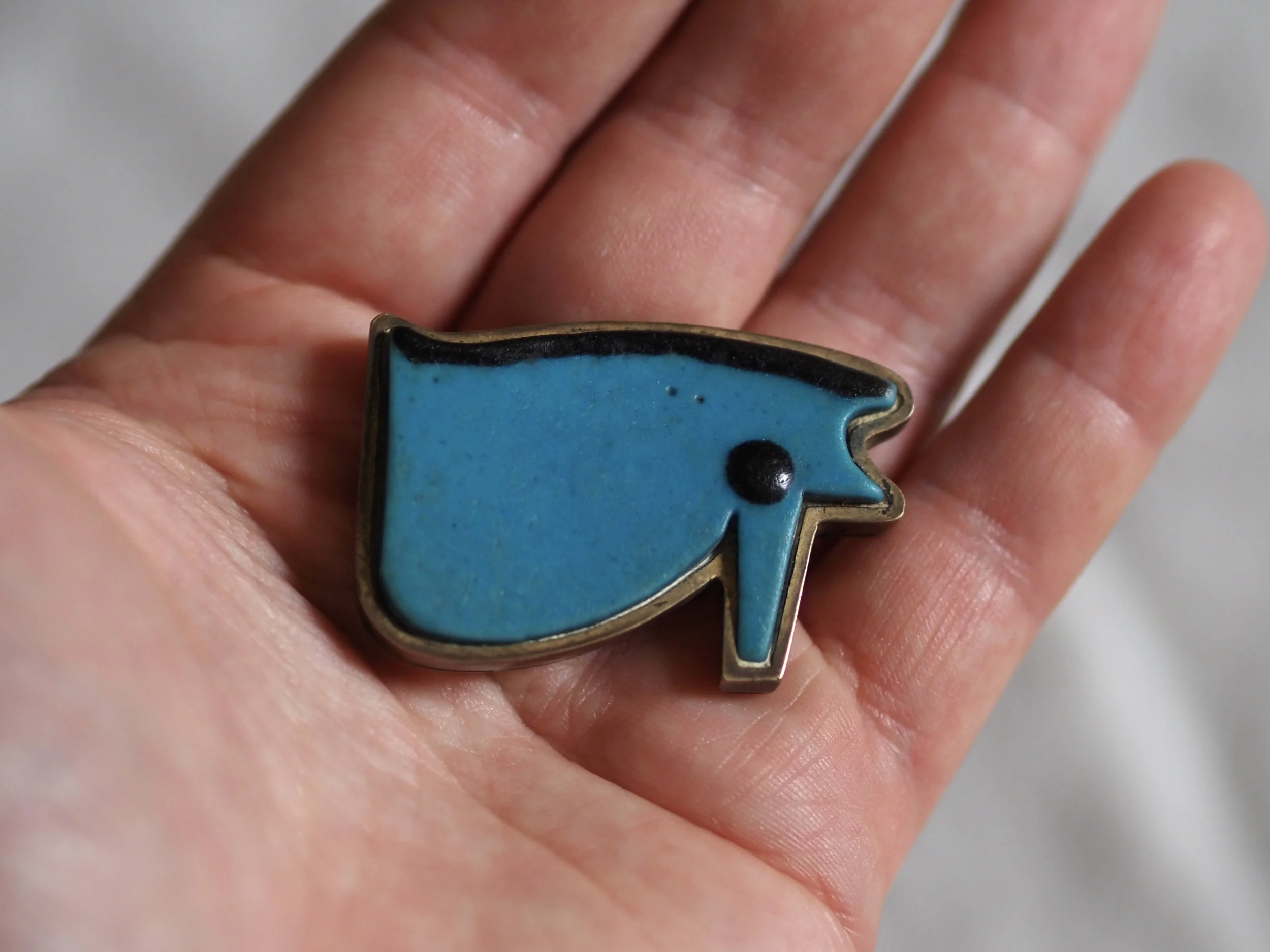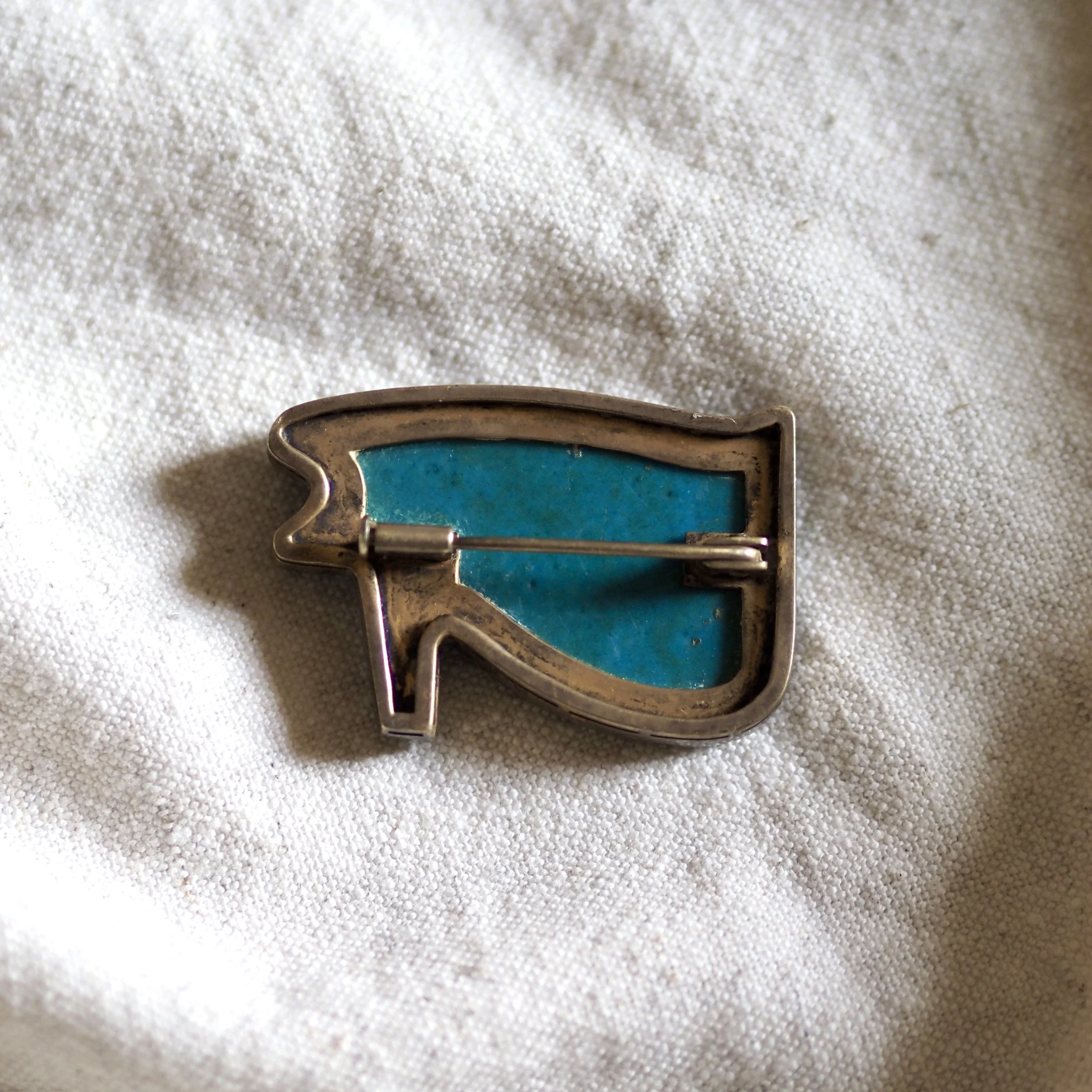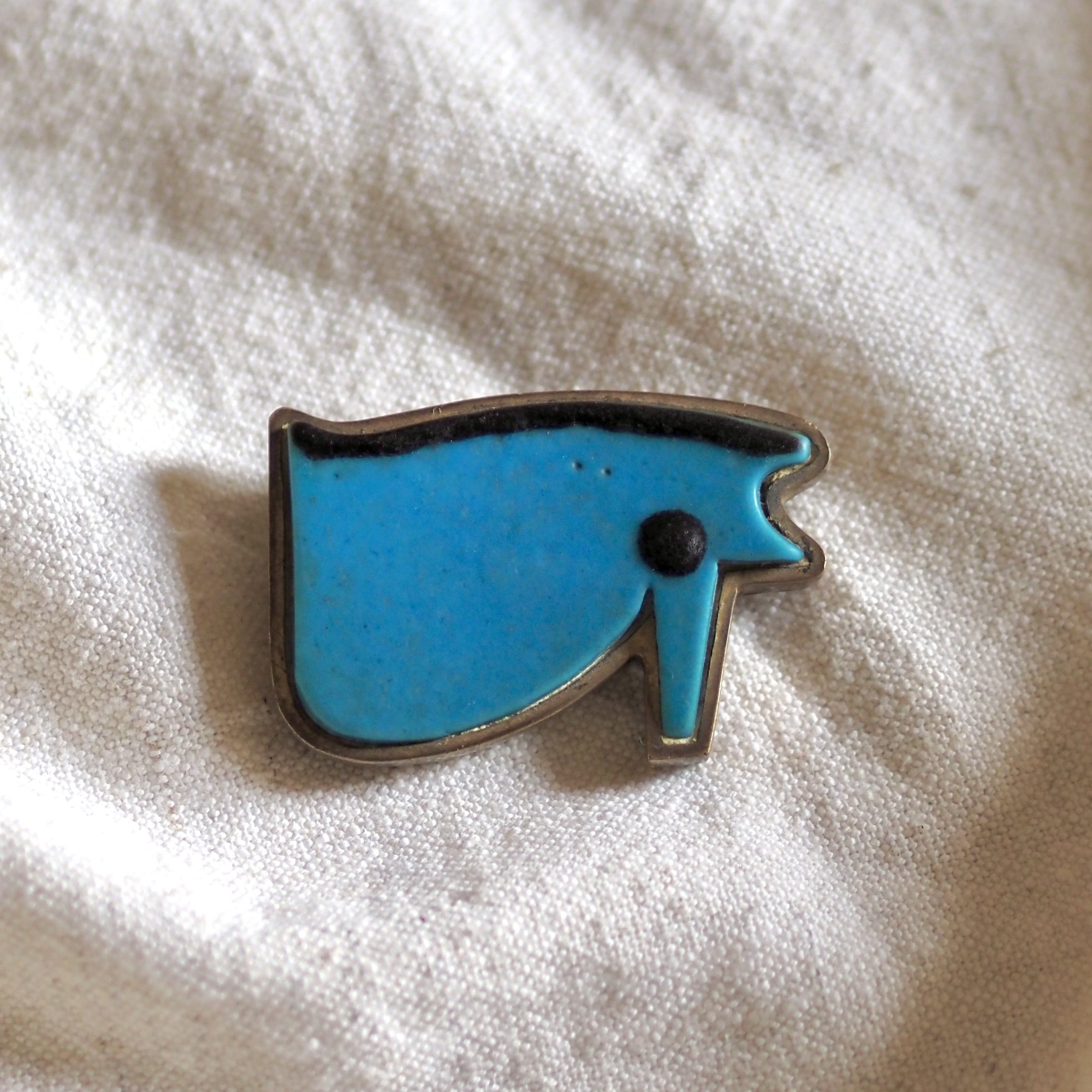Sacred Udjat Eye (Horus EYE)
Ancient Egyptian, Third Intermediate Period, 21st - 22nd Dynasty, 1070 - 712 B.C.
Blue Faience, set in a silver brooch
4.45 cm (1 3/4 in.) wide
Provenance:
Arielle P. Kozloff (Famed Egyptian antiquities scholar and curator of the Cleveland Museum of Art), 2011
Private Collection, Florida
£1, 750




An iconic symbol of Ancient Egypt, in these times, it was popular to wear Udjat, or sacred eyes, as they were believed to offer the wearer protective powers. The eye symbolises legitimate kingship and secures the life of the sun-god, and also of other deities, as well as human beings. In the Horus myth, the eye was stolen from its legitimate owner Horus, by Seth, the god of the wild, powerful, and untamed nature. This violent act caused disorder in the universe, and the eye had to be brought back to reestablish order, and to heal in its place with Horus.
A number of these eye symbols are made from Faience, a man made material comprised of quartz, alkaline salts, lime, and mineral-based colorants. It was covered in shiny, bright blue glaze — a colour that was closely linked with fertility, life, and the sun. Faience objects were considered magical, filled with the undying shimmer of the sun, was imbued with the powers of rebirth and glimmered with the brilliance of eternity.
Faience first appeared at the end of the fifth millennium B.C. and has occurred in various forms up to the present day. It may have been invented in the ancient Near East following the development of an alkaline glaze on quartz stones. Its technological refinement and major triumphs, however, were surely accomplished in Egypt. Some of the earliest faience objects made in Egypt were beads, soon followed by small votive temple offerings and royal tomb objects. Faience was inlaid into furniture and into walls as tomb and temple decoration. The most recognisable forms of faience are small figures of gods, animals, shabtis, jewellery, amulets, scarabs, and vessels.
